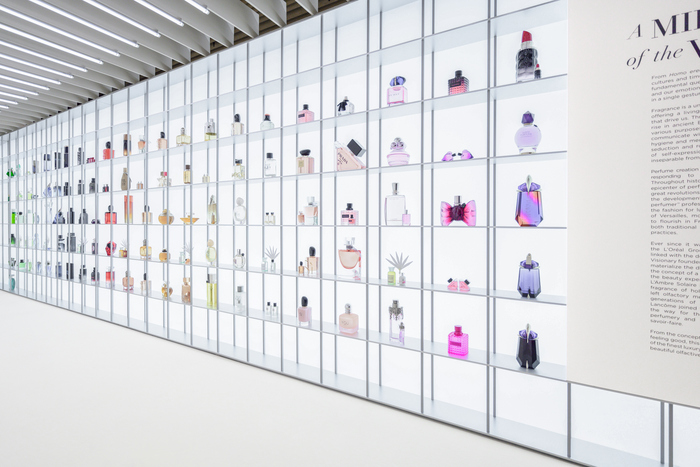The aroma of vanilla or orange blossom is pleasant for New Yorkers, the chachi of the jungles of northern Ecuador or the students of the Ubon Ratchathani University in Thailand.
At the other extreme, the smell of rotting onions or feet is unpleasant for the inhabitants of Mexico City, the Mah Meri fishermen of the Malay Peninsula or the Seri, hunter-gatherers of the Gulf of California.
A recently published study shows that, with great individual variability, the positive or negative valence of odors is universal.
Science has not advanced as much with smell as with other senses.
With vision, for example, knowing the wavelength of light, you can predict what color it is.
With the ear, the frequency of the sound wave allows us to know what sound it is.
But knowing the chemical structure of a molecule does not predict well what it will smell like.
In addition to the thousands of possible combinations of a compound (by atomic structure, molecular weight, concentration...), the perception of odors rests on a complex that begins in the olfactory cilia of the neurons of the nasal mucosa and ends in the environment of each one, in the aromas that have accompanied him since childhood.
In fact, for a good part of the scientists in this field, the good or bad smell depended fundamentally on the culture.
A study published this Monday in
Current Biology
lowers the importance of culture and bets on a universal valence of smells.
The researchers selected 10 molecules from a larger sample of nearly 500 scents from a previous study and presented them over several sessions to 235 people from 10 different cultures.
In addition to some twenty residents of Mexico City and New York, the sample also included people from traditional communities more or less exposed to Western culture, from Malaysia to Ecuador.
The hypothesis was that if smell is shaped by culture, its results should be very different.
The study shows that within each community there is a lot of variability.
But, on average, they all like the same aromas and dislike the same smells.
4-Hydroxy-3-methoxybenzaldehyde, that is, vanillin, the basic compound of vanilla pods, is the most pleasant molecule for the communities that have participated in the study.
Ethyl butyrate, present in many fruits and which gives that characteristic aroma to pineapple or mango, is also highly appreciated in various parts of the planet.
Synthesized, it is an essential additive in packaged citrus juices.
Linalool, a constituent of many aromatic plants, or phenethyl alcohol from roses, carnations, orange blossom or green pine also appear highly rated.
"Culture plays a very small role in determining how pleasant a smell is"
Asifa Majid, professor at the University of Oxford and expert in the perception of smell and language
Professor Asifa Majid of the University of Oxford, co-author of the research, acknowledges that "several previous ethnographic studies in different communities suggested that cultures can vary widely in terms of the smells they find pleasant and unpleasant, but they do not had experimentally tested with a wide range of cultures.”
Her study, she adds, "fills this gap by testing it in very different settings, including hunter-gatherers and small-scale farmers, as well as people living in big cities in different parts of the world."
Majid, who did this work while at the University of York, concludes that “culture plays very little role in determining how pleasant an odor is.
Her colleague at the Karolinska Institute in Stockholm, Sweden, and first author of the study,
Neuroscientist Artin Arshamian agrees with her: “We're not saying that learning doesn't affect smell (or taste) preferences.
Of course they do!
What we are saying is that culture has a small impact on the perception of pure odor.”
The bad smell also seems universal.
At the opposite end of the spectrum to vanilla, the worst-ranked molecule by participants, whether Malaysian, Mexican, or Ecuadorian, was isovaleric acid, present both in human sweat and in rancid animal and vegetable fats.
It is that smell of some French or northern Spanish cheeses.
Also smelly to most is the diethyl disulfide that comes out of overripe onions or rotten potatoes.
And a third malodorous compound is octanoic or caprylic acid, naturally present in palm or coconut oils and in the fat of mammalian milk.
A possible limitation of the work is that they have used only 10 molecules.
But Arshamian explains: "We selected the odorants based on a previous study with post-industrial urban dwellers in the United States (New York City) who rated the pleasantness of 476 different molecules."
From them they selected a range “that covered the valence from unpleasant to pleasant”, he adds.
They used the remaining 466 odors to generate a prediction model based on the molecular structure of each odor.
“Thus, although the odors that are tested are few, the model is based on a much larger set.
It is important to note that the ten odors were not included when building the model and even so the model was able to predict the classification of odours”, concludes the researcher.
The study with those almost 500 odors was published in 2016. So 480 molecules with a very different molecular weight or complexity were used.
There were compounds with 0 molecular complexity, such as water or iodine, up to molecules such as androstadionone, a steroid related to pheromones, whose value of 564 indicates a very complex structure of macromolecules.
That work also elevated vanillin and buried isovaleric acid, with the most extreme valences.
The accumulation of data served them to confirm previous findings or achieve new ones.
Thus, the degree of pleasantness of an aroma depended on the greater molecular complexity, as long as hydrogen was not in the formula.
The presence of oxygen or a high number of atoms also anticipated that this substance would smell good.
To the extreme,
“A good chemist would need a bit of sociology, genetics and knowledge of artificial intelligence to be able to find a universally pleasant smell”
Pablo Meyerr, researcher at IBM Research and director of the DREAMS Challenge
In 2017,
Science
published the second part of that study.
But this time, the DREAM Olfactory Prediction Challenge sought for a series of algorithms to predict the pleasantness or not of an aroma based on the up to 4,884 physicochemical properties that may be behind an odour.
Massive computing, fueled by centuries of chemical knowledge, was up against subjective descriptions from various groups, who had to describe the smell of each molecule with words, such as “smells sour”, “baked bread”, “musty” , “fruity, “chemical”... The models managed to predict very well both the intensity and the valence of the odours.
They also hit half of the semantic descriptors used by humans to define each scent.
Hardly anyone dared to describe the scent of the water.
Mexican Pablo Meyer is the director of the DREAM Challenge at IBM Research and co-author of the
Science study
.
"The idea that most people have is that language does not describe odors well, but we have shown that it does, that regardless of whether you like something or not, we are capable of accurately describing the olfactory sensation with words," he says. .
Regarding the study by Arshamian and Majid, he highlights that "indeed, the most pronounced variation is individual, this leads to the idea that you like (or don't like) odors or they remind you of a particular odor that goes beyond culture. ”.
Regarding the possibility that science, in his case computing, anticipates an odor as predicted by the color or sound of its fundamental properties, Meyer believes that valence can be recreated, although it will not be easy: "a good chemist would need a bit of sociology (cultural differences),
You can follow
MATERIA
on
,
and
, or sign up here to receive
our weekly newsletter
.

/cloudfront-eu-central-1.images.arcpublishing.com/prisa/C3OAKERLHFC73MRZV5FMK6X6II.jpg)







